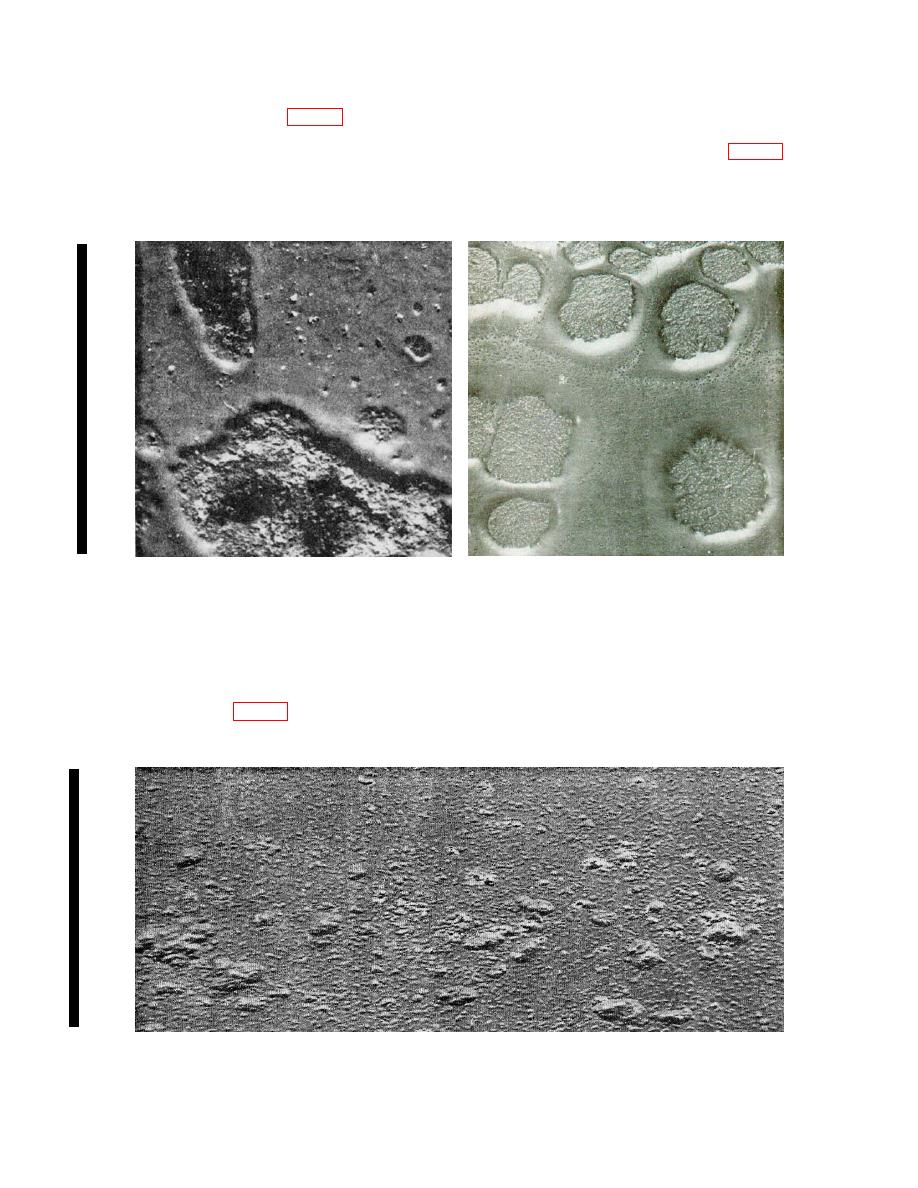 |
|||
|
|
|||
|
|
|||
| ||||||||||
|
|
 TM 5-5420-279-23
(7) Severe Cissing. Fig 5.7 shows this effect which is caused by painting over grease or oil
contamination. This may affect the base or undercoat or only the finish coat. In any event
the whole of the area affected must be cleaned down to the coating below the cissing. Fig 5.8
shows the same effect caused by applying incompatible types of paint - in this case a red
oxide primer and polyurethane based finish coat. This fault should be cleaned down to the
substrate and the correct paint specification applied.
Coatings
Surface
(8) Blistering. Although this fault is obvious in appearance, (i.e., dome shaped projections or
blisters) the cause may not readily be noticed. In any event the blisters will most certainly be
retaining harmful agents, such as water vapor or gases, against the substrate. For this
reason alone blistered paint should be cleaned down to the substrate and the cause
eliminated. Fig 5.9 shows blisters caused by aging of the paint system and corrosion of the
substrate.
5-8 Change 1
|
|
Privacy Statement - Press Release - Copyright Information. - Contact Us |